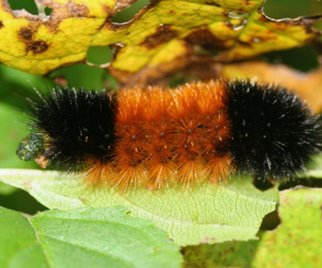It is hard to prepare for extreme winter weather when December was so warm. However, variability is a characteristic of Kansas weather and a drop in temperature with above normal precipitation can create some very stressful conditions for livestock. Animals adapt to colder weather as we go through the fall into winter, but if there is an abrupt change, without acclimation, the stress is compounded.
Many of us are all too aware of the impact wind has on what it takes to keep warm in the winter. Wind speed, along with temperature, humidity, and solar radiation, have been combined into an animal comfort index that can be used to classify the level of weather-related stress for cattle. The K-State Mesonet now provides both current conditions and a 7-day forecast of the Animal Comfort Index that producers can use for planning.
During extreme cold, cattle need more energy just to maintain body heat. Windbreaks are a key tool in helping livestock cope with cold stress and reduce the amount of energy, and in effect cost, to maintain weight. Some of the best windbreaks are multiple rows of established trees, but they take years to develop and serve a fixed location. If building a portable windbreak or a windbreak fence, the most effective for wind protection is 75 to 80% solid to reduce wind speed but prevent snow drifting. An opening of 4 to 6 inches at the base will promote drying and drainage.
Bedding is another tool to help livestock manage cold stress. Bedding provides insulation from mud and frozen ground and helps keep cattle clean. Shelter and bedded areas only calves can access will help young calves better cope with the winter weather. Bulls can be overlooked during the winter months; however, frostbite of the scrotum can cause anywhere from short-term to permanent damage to sperm production. Windbreaks and bedding are great tools to protect your investment in bulls and their genetics.
Drought has impacted forage availability in parts of the state and may make it harder to find sources of bedding. If needed, unrolling large round bales of good quality feed can do double duty as feed and bedding for a short-term solution. Feedlot calves that received bedding (4 lbs. per head per day) during a particularly cold January gained 3.33 lbs. per day compared to 2.25 lbs./day for un-bedded calves. For young or already stressed calves, bedding may minimize negative health impacts from the combined stressors.
When cold stress occurs, feeding cattle late in the day can help cattle cope with night-time temperature declines as the heat of fermentation in the rumen will peak about six hours after consumption.
Alicia Boor is the Agriculture and Natural Resources agent with K-State Research and Extension – Cottonwood District. Contact her by email at aboor@ksu.eduor call 620-793-1910.





